
A.J. FOYT RECORDS
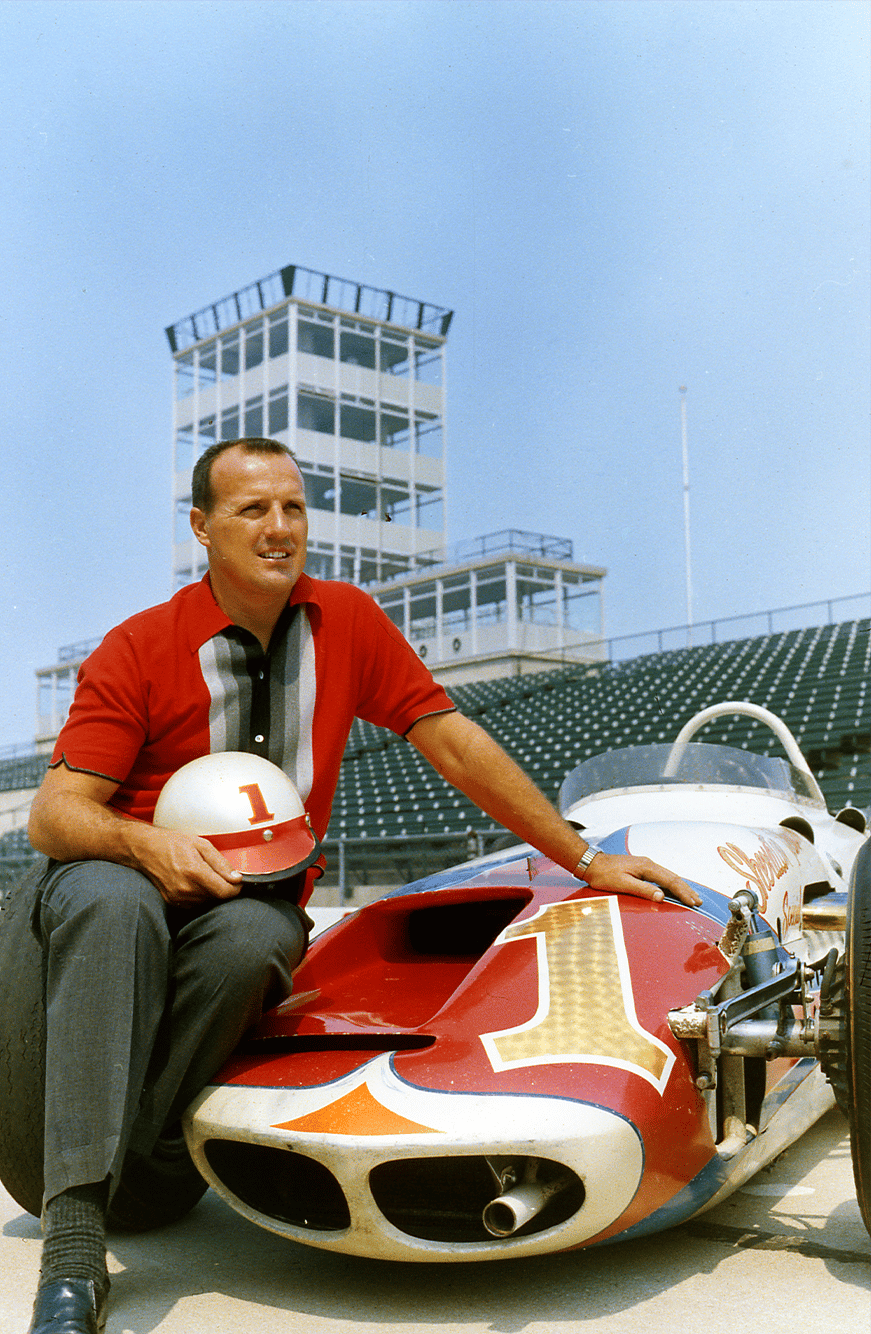



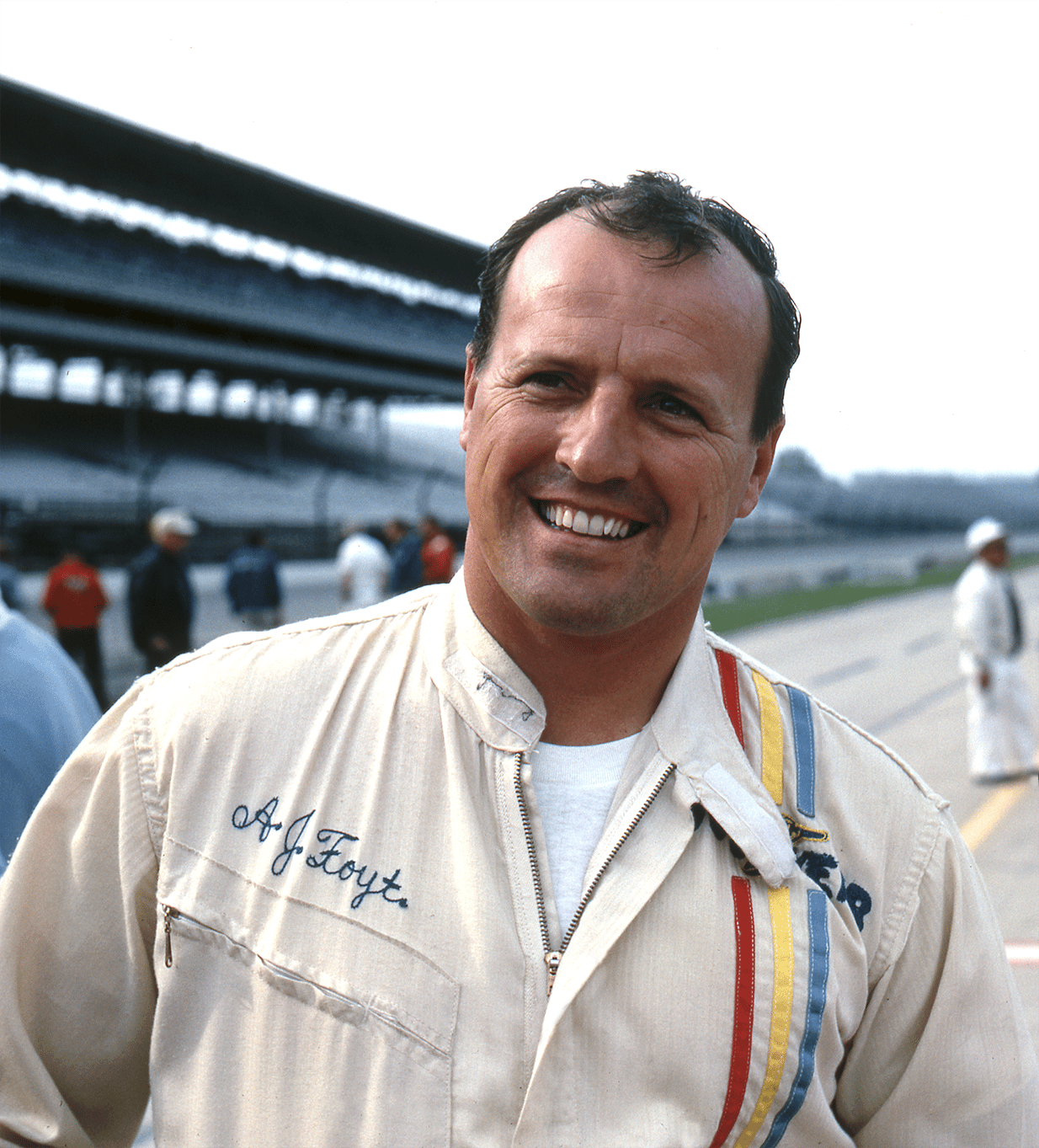
A.J. Foyt remains INDYCAR’s ultimate tough guy, the Texan to avoid messing with even at age 86.
But perspective is needed to understand why this legendary figure is emotional when referencing his first Indianapolis 500 victory, which occurred 60 years ago.

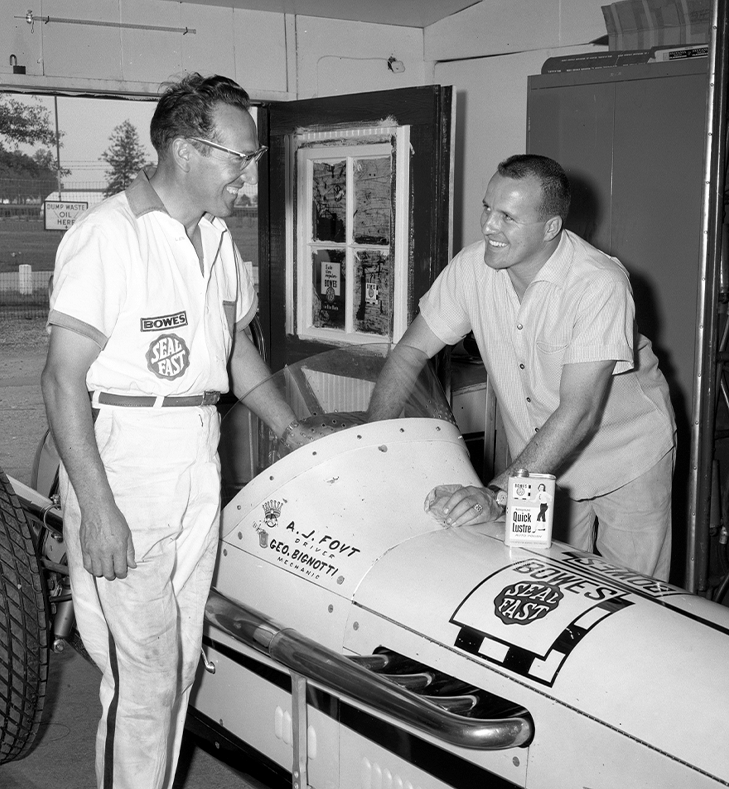
It would be another six decades before Foyt listened to the post-race interview he gave on radio that day. The words had him vowing to return to IMS the next year, yet in retrospect he wasn’t convinced.
Foyt’s first three “500” starts weren’t foretelling of the legend he would become. He made it past Lap 150 only once, finishing 10th in 1959. He trailed winner Rodger Ward to the line by more than four minutes.
- A.J. FOYT

Foyt had been a “500” rookie just three years earlier, 23 years old and mentored by popular Hoosier driver Pat O’Connor. That race was marred by a first-lap accident, with the first five cars collected, eight cars eliminated, 15 involved in all. Jerry Unser suffered only a dislocated shoulder as his car sailed over the Turn 3 wall. O’Connor suffered fatal injuries.
Foyt never forgot it.

- A.J. FOYT
Sachs was as popular as drivers came in the day, nicknamed the “Clown
Prince of Auto Racing.” He had charm and style, a lovable character from
the Northeast.
Despite winning the pole for a second straight year, Sachs couldn’t hold off
No. 3 qualifier Jim Hurtubise on the opening lap. “Herk” led the first 35 laps,
with Rathmann and rookie hotshot Parnelli Jones leading the race before
Sachs could.
Yet, the second half of the race was dominated by Sachs and Foyt, and their
battle in the late stages of the race arguably had as much drama as what
Rathmann and Ward delivered in ’60.
Sachs and Foyt led 100 of the final 106 laps, and Sachs had the lead after
completing what should have been their final pit stops. Sachs could see
victory, but suddenly he saw Foyt charging.
The superior pace Foyt had on Sachs was startling given how competitive they had been prior to the final round of pit stops. Foyt not only easily made the pass on Lap 170, he made it too easily, and that set the table for what followed.
Tragedy struck in 1961 when two-time national champion Tony Bettenhausen, who had done everything in the sport except win the “500,” suffered fatal injuries in practice while driving the car of friend Paul Russo.
Foyt threw his helmet against the wall of his team’s garage following his friend’s front straightaway crash, the result of a suspension bolt coming loose.
Foyt, then 26, started seventh in the Golden Anniversary race, overshadowed by the second consecutive pole of Eddie Sachs and the debut of Jack Brabham's rear-engine Cooper Climax (he qualified 13th). There also was the lingering euphoria of the previous year’s for-the-ages duel between Ward and Jim Rathmann, who won.
Foyt, the reigning national champion, didn’t get to the lead until Lap 76, but he was in the mix the rest of the way in the No. 1 Bowes Seal Fast entry, a Floyd Travis-built copy of an A.J. Watson design prepared by George Bignotti and powered by an Offy. Until that year, none of the members of that team had ever won the “500.” The same was true of members of the Sachs entry, owned by Al Dean and directed by
Clint Brawner.
But the race was on, another for the ages.

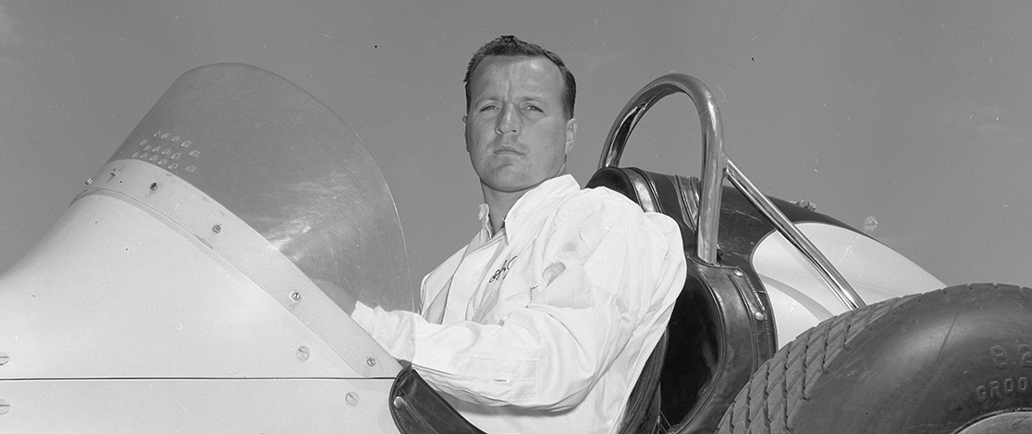
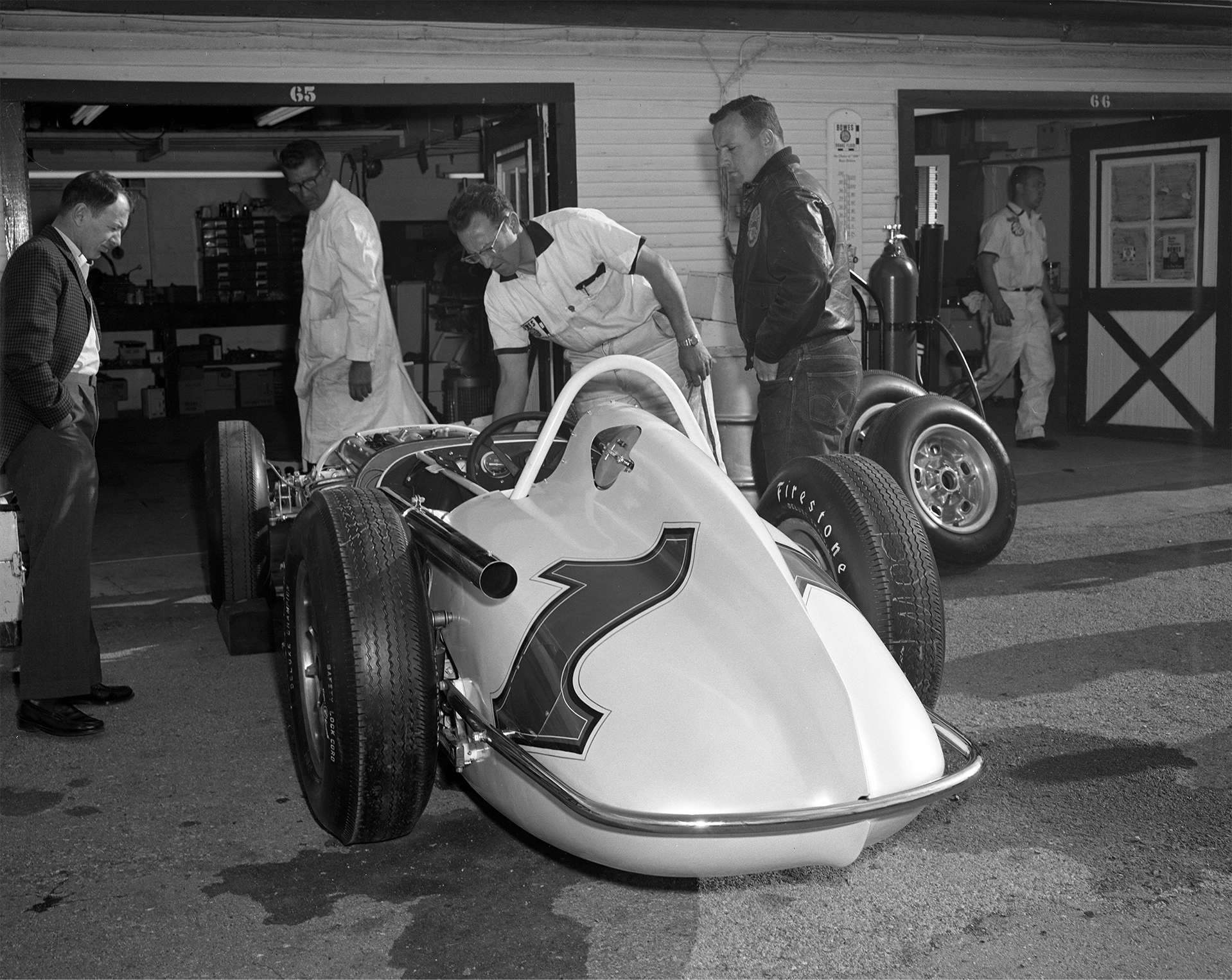

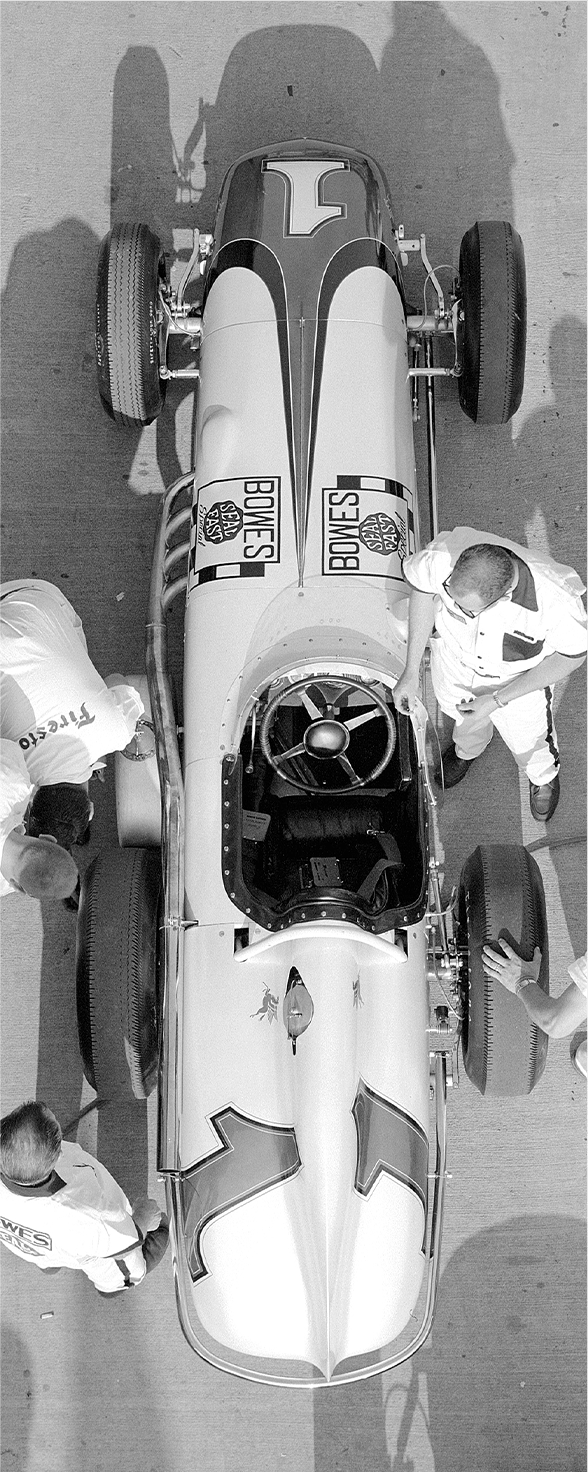
There have been a handful of moments in “500” history when the sound of the crowd could be heard over the roar of the engines, one of the recent being 2005 when 23-year-old rookie Danica Patrick took the lead from Dan Wheldon just 11 laps from
the finish.
In ’61, Foyt thought he felt a vibration on Lap 197, but it had nothing to do with the reliability of his Firestone tire. As Foyt learned as he raced down the front straightaway, the crowd’s roar had been at Sachs’ No. 12 Dean Van Lines Special sitting on pit road, the crew changing his car’s right-side tires.
Foyt knew what that meant. Victory was his for the taking.
He finished 8.28 seconds ahead of Sachs, breaking the year-old event record with an average speed of 139.130 mph. It was the first of four race wins that championship-capturing season.
In 1961, drivers didn’t have radio communication with their crews as they do today. Instead, teams held up chalk boards as drivers traveled down the front straightaway.
The first board Foyt was shown in those pivotal moments alluded to the reason he had sailed past Sachs so quickly, and it got Foyt thinking: What happened on that last pit stop? What changed between the two cars? The second sign confirmed it. Foyt’s car didn’t get a full load of fuel, so he was running quicker than Sachs because his car was lighter.
A failed fuel nozzle had been the culprit, and Foyt had to stop again on Lap 184. Exiting the pits, Foyt trailed Sachs by 30 seconds. Time was running out.
However, Foyt’s peril ultimately led to his prize because Sachs didn’t know why Foyt’s car had been so much quicker, and he had been driving manically to keep pace. With just over three laps remaining, Sachs could see the white rubber beneath the tread rubber of one of his Firestone tires, and every driver of that era knew that signal.
Pit immediately, or else.
Sachs chose to pit.
In 1964, Foyt won 10 of the 13 races, a winning rate of 77 percent that likely will never be achieved in this competitive sport. A second “500” victory was part of that, and he won the race again in ’67 and ’77 to stand as the event’s first four-time winner.
But winning four times can’t come without winning the first, and it was arguably his most rewarding.

- A.J .FOYT


- A.J. FOYT

A. J. FOYT - 60 YEARS


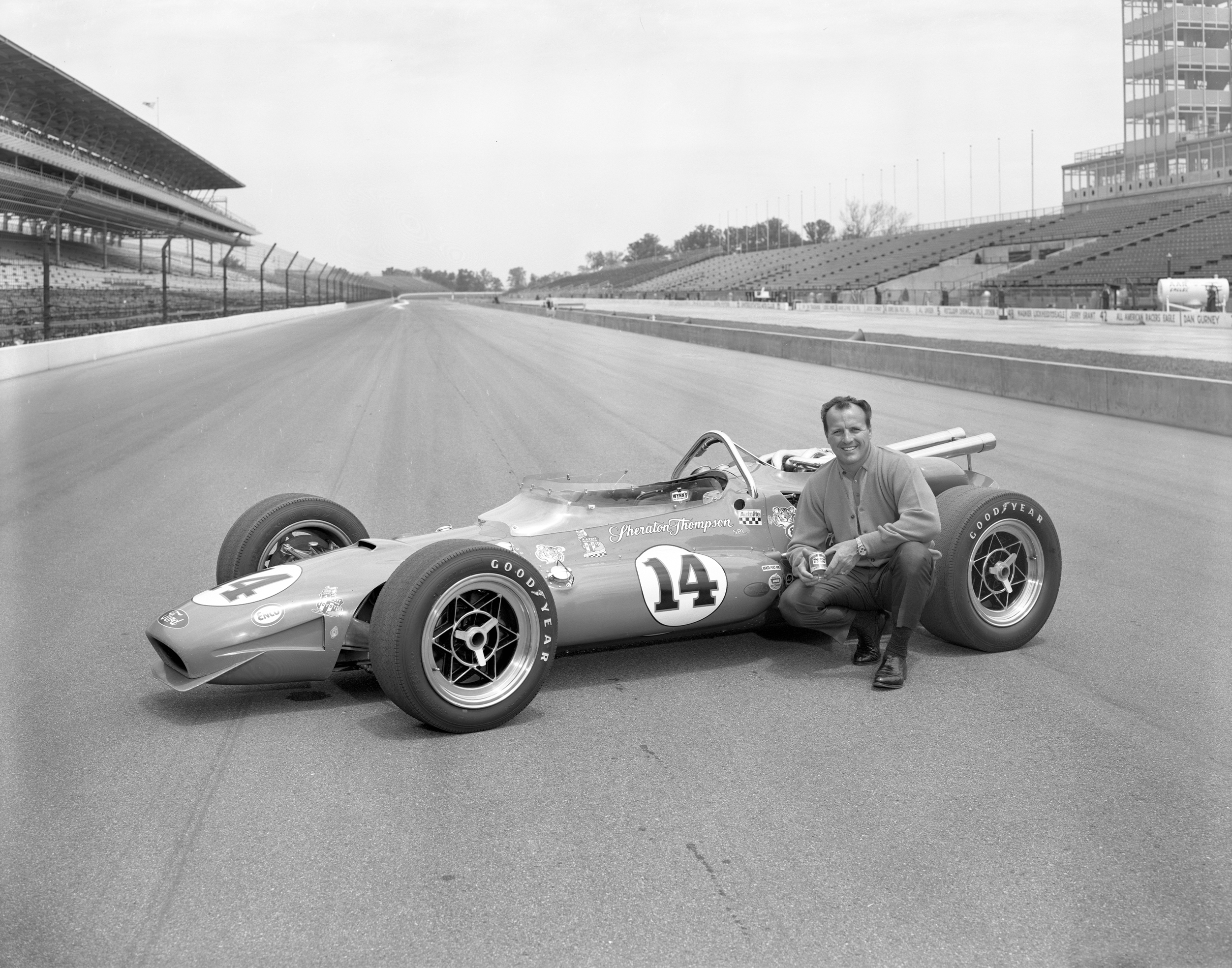

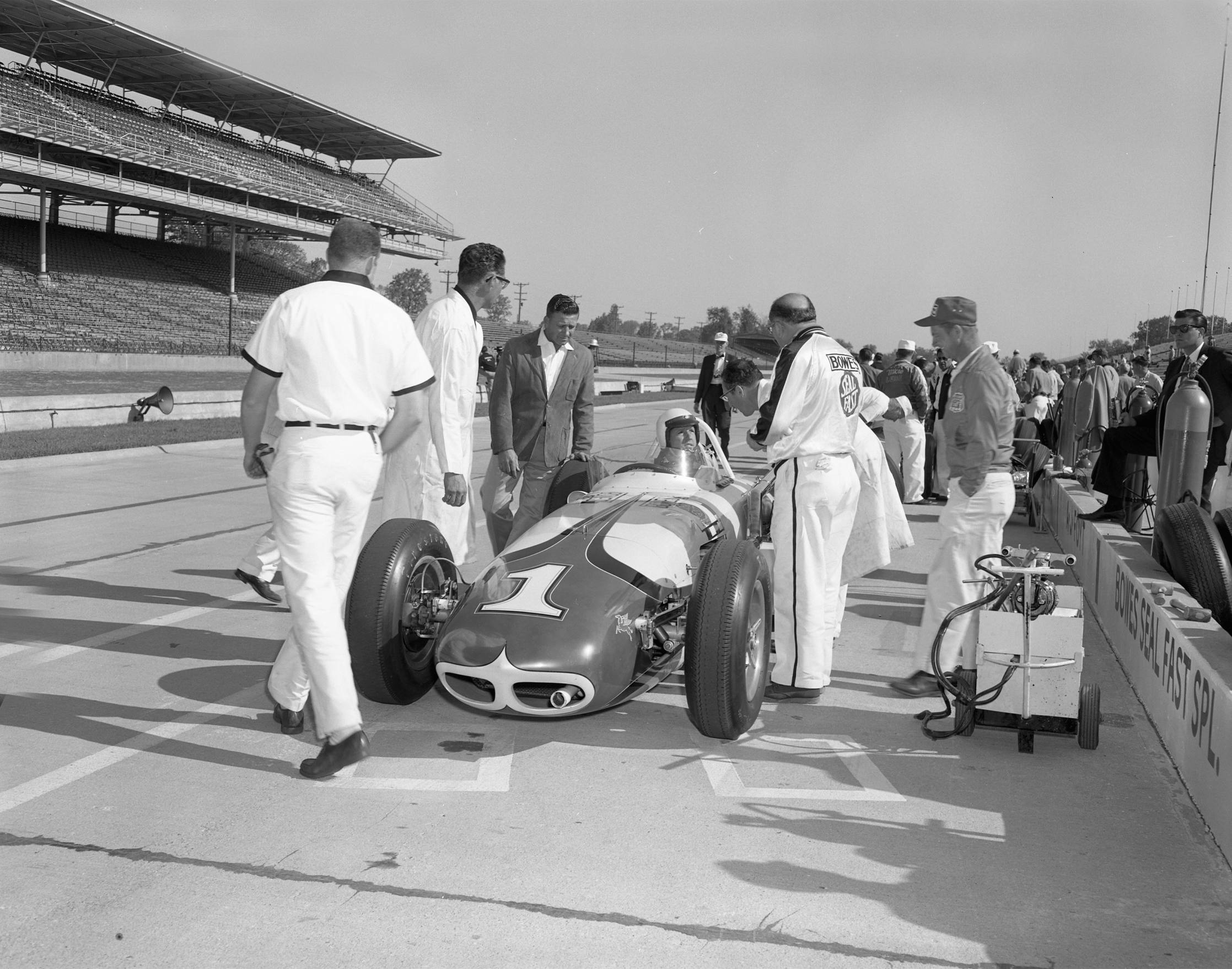


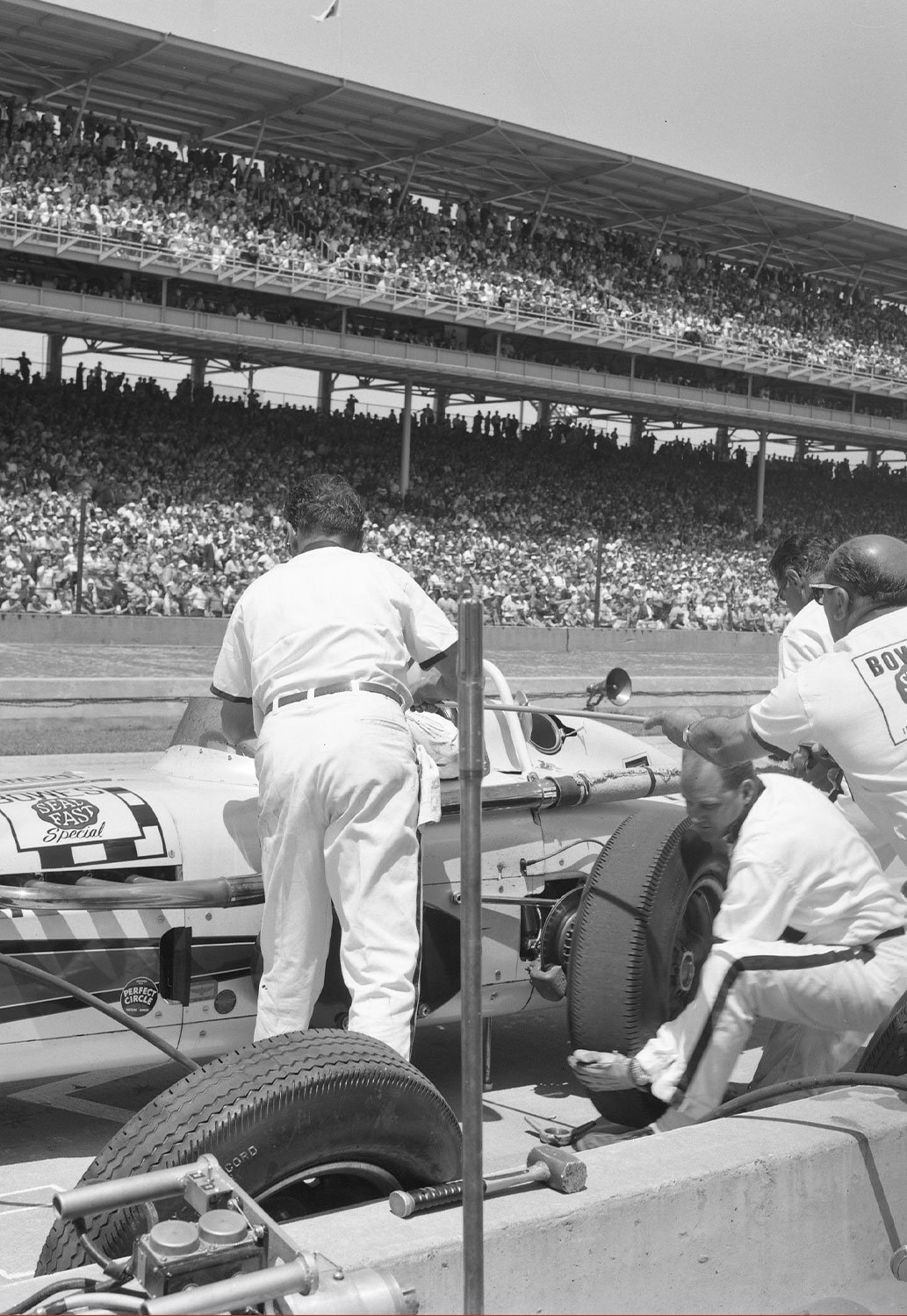

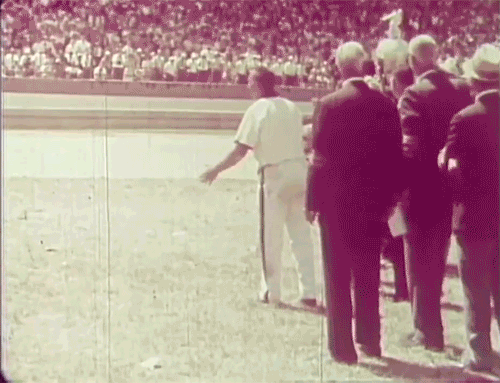
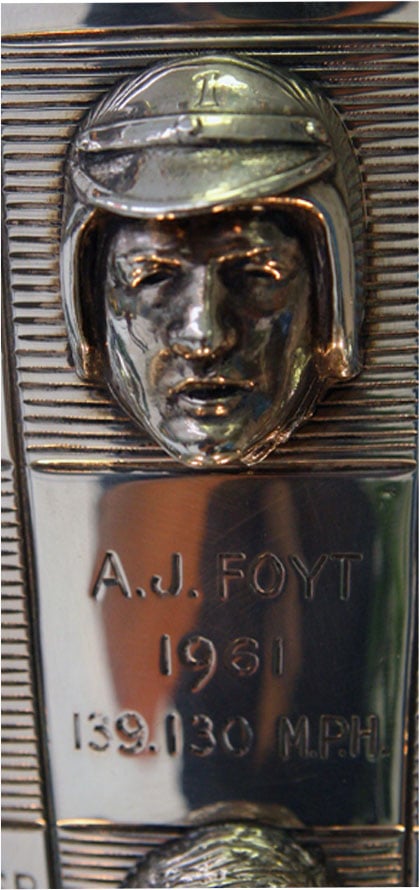


WHERE TRADITION NEVER STOPS

A.J. FOYT –60 YEARS

A.J. Foyt remains INDYCAR’s ultimate tough guy, the Texan to avoid messing with even at age 85.
But perspective is needed to understand why this legendary figure is emotional when referencing his first Indianapolis 500 victory, which occurred 60 years ago.
Foyt had been a “500” rookie just three years earlier, 23 years old and mentored by popular Hoosier driver Pat O’Connor. That race was marred by a first-lap accident, with the first five cars collected, eight cars eliminated, 15 involved in all. Jerry Unser suffered only a dislocated shoulder as his car sailed over the Turn 3 wall. O’Connor was killed.
Foyt never forgot it.

It would be another six decades before Foyt listened to the post-race interview he gave on radio that day. The words had him vowing to return to IMS the next year, yet in retrospect he wasn’t convinced.
Foyt’s first three “500” starts weren’t foretelling of the legend he would become. He made it past Lap 150 only once, finishing 10th in 1959. He trailed winner Rodger Ward to the line by more than 4 minutes.
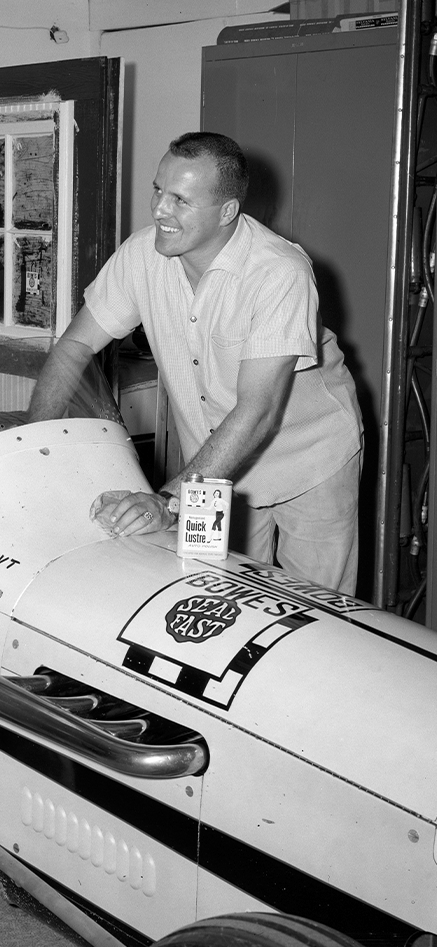
- AJ FOYT

- AJ FOYT



Foyt threw his helmet against the wall of his team’s garage following his friend’s front straightaway crash, the result of a suspension bolt coming loose.
Foyt, then 26, started seventh in the Golden Anniversary race, overshadowed by the second consecutive pole of Eddie Sachs and the debut of the Speedway’s first rear-engine machine, a Cooper Climax driven by rookie Jack Brabham (he qualified 13th). There also was the lingering euphoria of the previouts year’s for-the-ages duel between Ward and Jim Rathmann, who won.
Foyt, the reigning national champion, didn’t get to the lead until Lap 76, but he was in the mix the rest of the way in the No. 1 Bowes Seal Fast entry, a Floyd Travis-built copy of an A.J. Watson design prepared by George Bignotti and powered by an Offy. Until that year, none of the members of that team had ever won the “500.” The same was true of members of the Sachs entry, owned by Al Dean and directed by
Clint Brawner.
But the race was on, another for the ages.

Sachs was as popular as drivers came in the day,
nicknamed the “Clown Prince of Auto Racing.”
He had charm and style, a lovable character from
the Northeast.
Despite winning the pole for a second straight
year, Sachs couldn’t hold off No. 3 qualifier Jim
Hurtubise on the opening lap. “Herk” led the first
35 laps, with Rathmann and rookie hotshot
Parnelli Jones leading the race before
Sachs could.
Yet, the second half of the race was dominated by Sachs and Foyt, and their battle in the late stages of the race arguably had as much drama as what Rathmann and Ward delivered in ’60.
Sachs and Foyt led 100 of the final 106 laps, and Sachs had the lead after completing what should have been their final pit stops. Sachs could see victory, but suddenly he saw Foyt charging.
The superior pace Foyt had on Sachs was startling given how competitive they had been prior to the final round of pit stops. Foyt not only easily made the pass on Lap 170, he made it too easily, and that set the table for what followed.
Tragedy struck in 1961 when two-time national champion Tony Bettenhausen, who had done everything in the sport except win the “500,” was killed in practice while driving the car of friend Paul Russo.
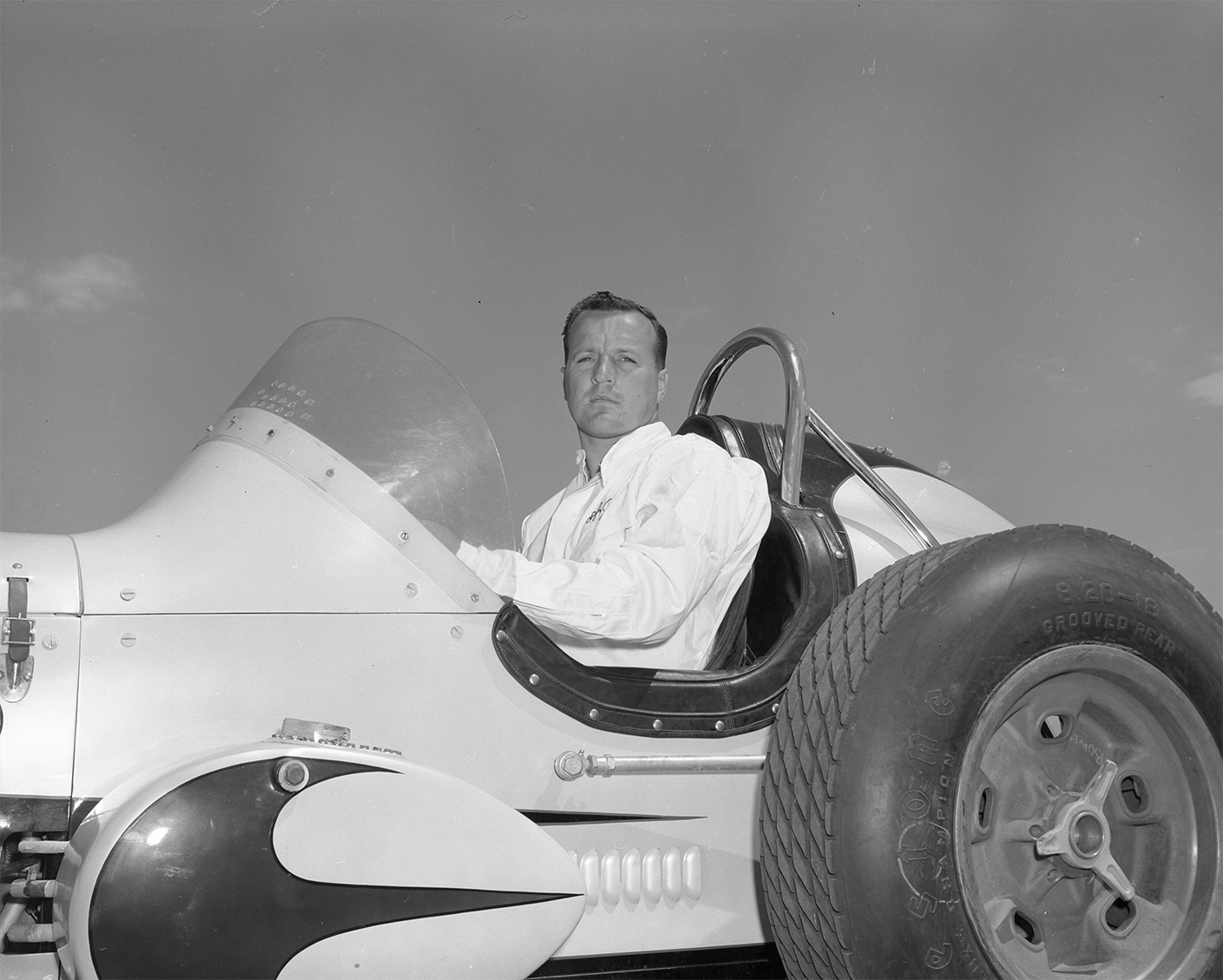
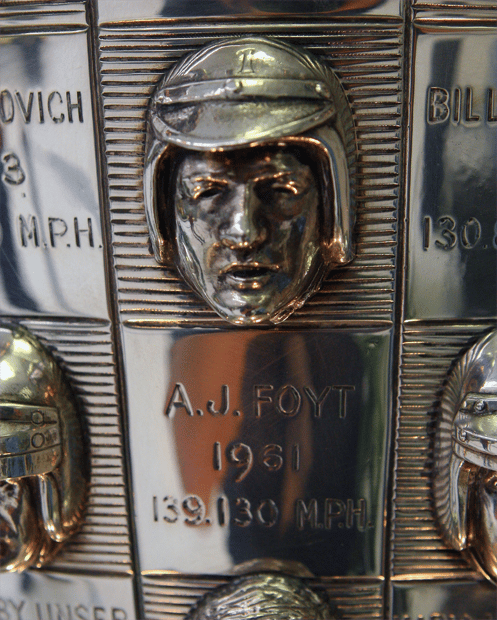
In 1961, drivers didn’t have radio communication with their crews as they do today. Instead, teams held up chalk boards as drivers traveled down the front straightaway.
The first board Foyt was shown in those pivotal moments alluded to the reason he had sailed past Sachs so quickly, and it got Foyt thinking: What happened on that last pit stop? What changed between the two cars? The second sign confirmed it. Foyt’s car didn’t get a full load of fuel, so he was running quicker than Sachs because his car was lighter.
A failed fuel nozzle had been the culprit, and Foyt had to stop again on Lap 184. Exiting the pits, Foyt trailed Sachs by 30 seconds. Time was running out.
However, Foyt’s peril ultimately led to his prize because Sachs didn’t know why Foyt’s car had been so much quicker, and he had been driving manically to keep pace. With just over three laps remaining, Sachs could see the white rubber beneath the tread rubber of one of his Firestone tires, and every driver of that era knew that signal.
Pit immediately, or else.
Sachs chose to pit.
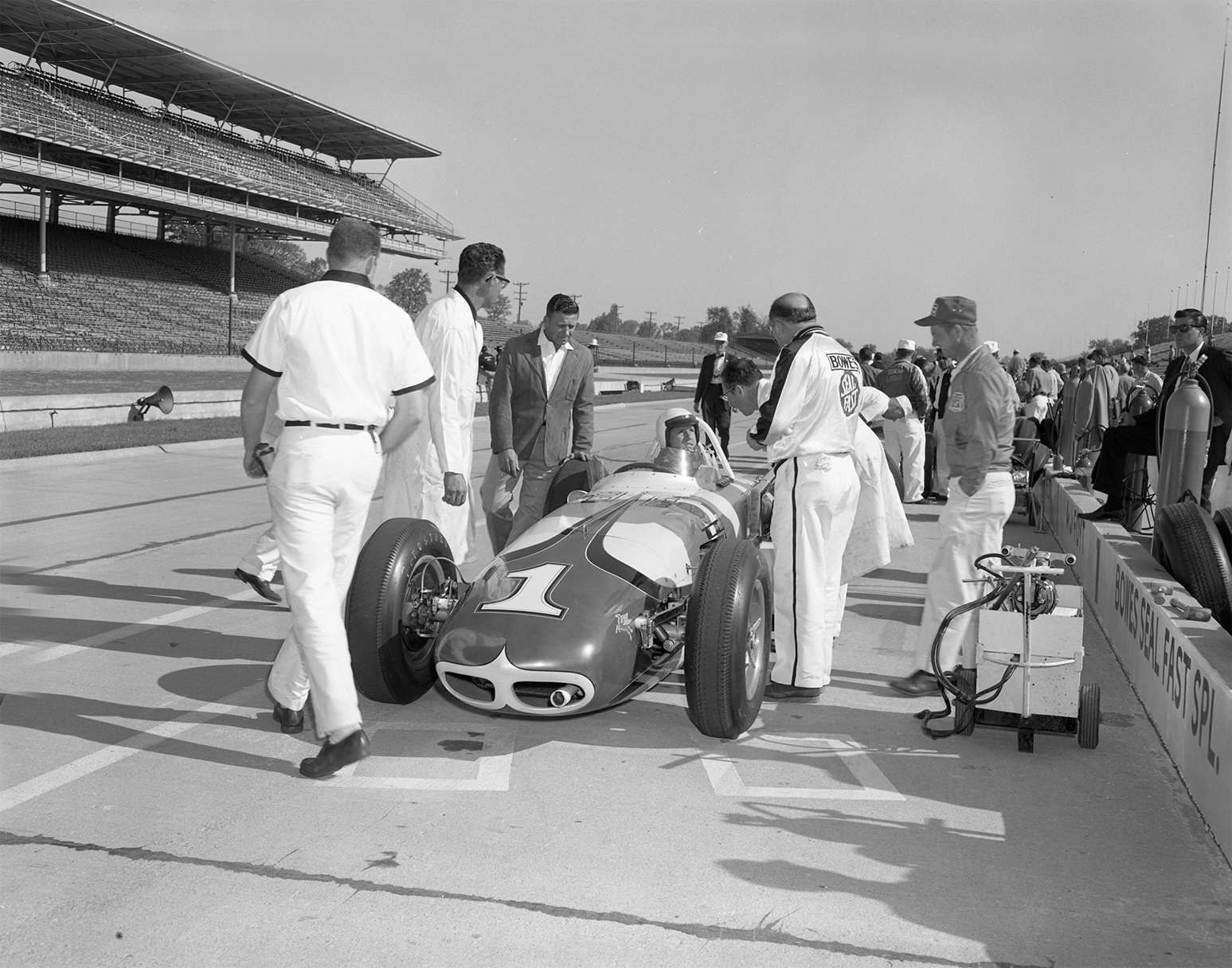

There have been a handful of moments in “500” history when the sound of the crowd could be heard over the roar of the engines, one of the recent being 2005 when 23-year-old rookie Danica Patrick took the lead from Dan Wheldon just 11 laps from the finish.
In ’61, Foyt thought he felt a vibration on Lap 197, but it had nothing to do with the reliability of his Firestone tire. As Foyt learned as he raced down the front straightaway, the crowd’s roar had been at Sachs’ No. 12 Dean Van Lines Special sitting on pit road, the crew changing his car’s right-side tires.
Foyt knew what that meant. Victory was his for the taking.
He finished 8.28 seconds ahead of Sachs, breaking the year-old event record with an average speed of 139.130 mph. It was the first of four race wins that championship-capturing season.
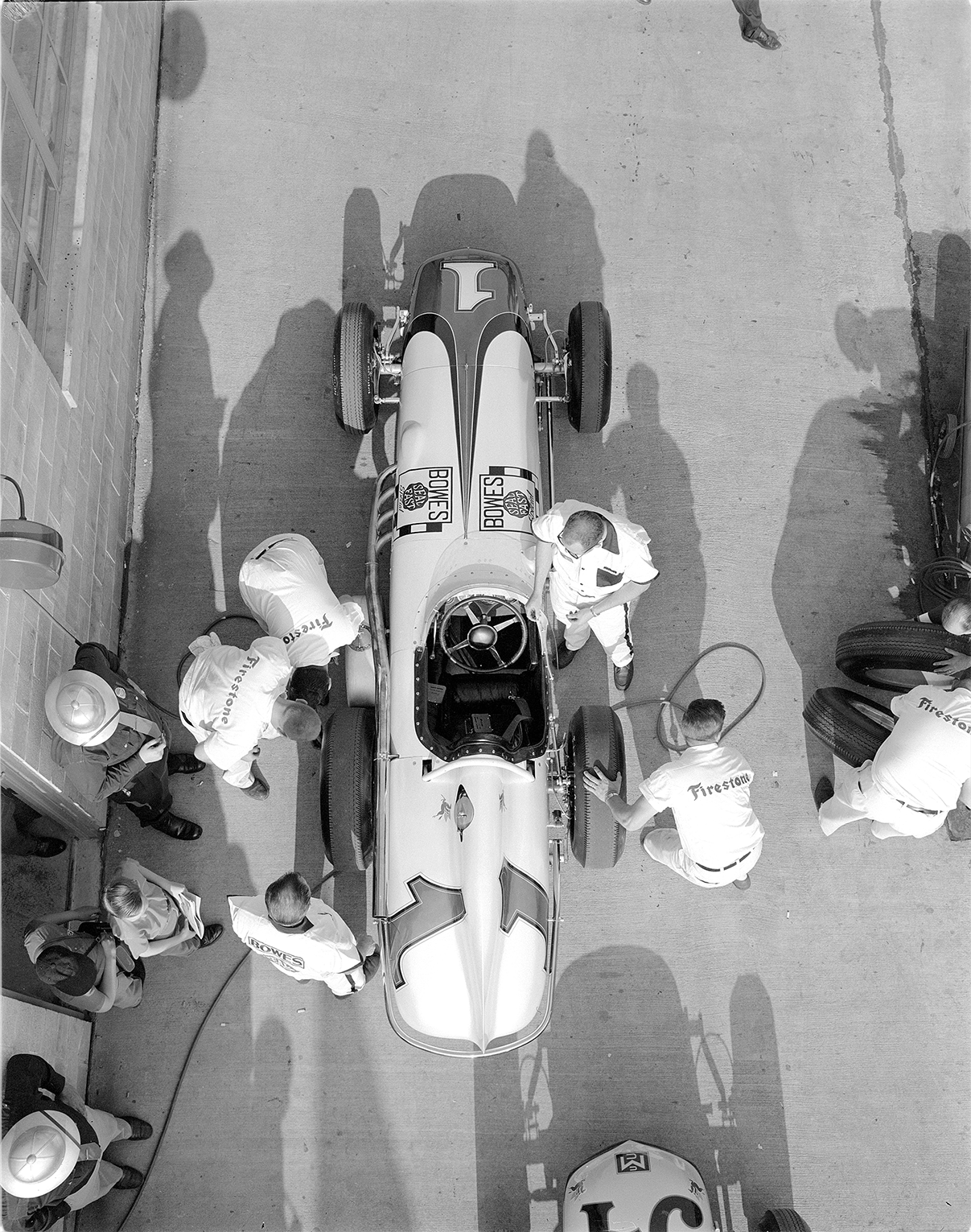
In 1964, Foyt won 10 of the 13 races, a winning rate of 77 percent that likely will never be achieved in this competitive sport. A second “500” victory was part of that, and he won the race again in ’67 and ’77 to stand as the event’s first four-time winner.
But winning four times can’t come without winning the first, and it was arguably his most rewarding.
- AJ FOYT

- AJ FOYT




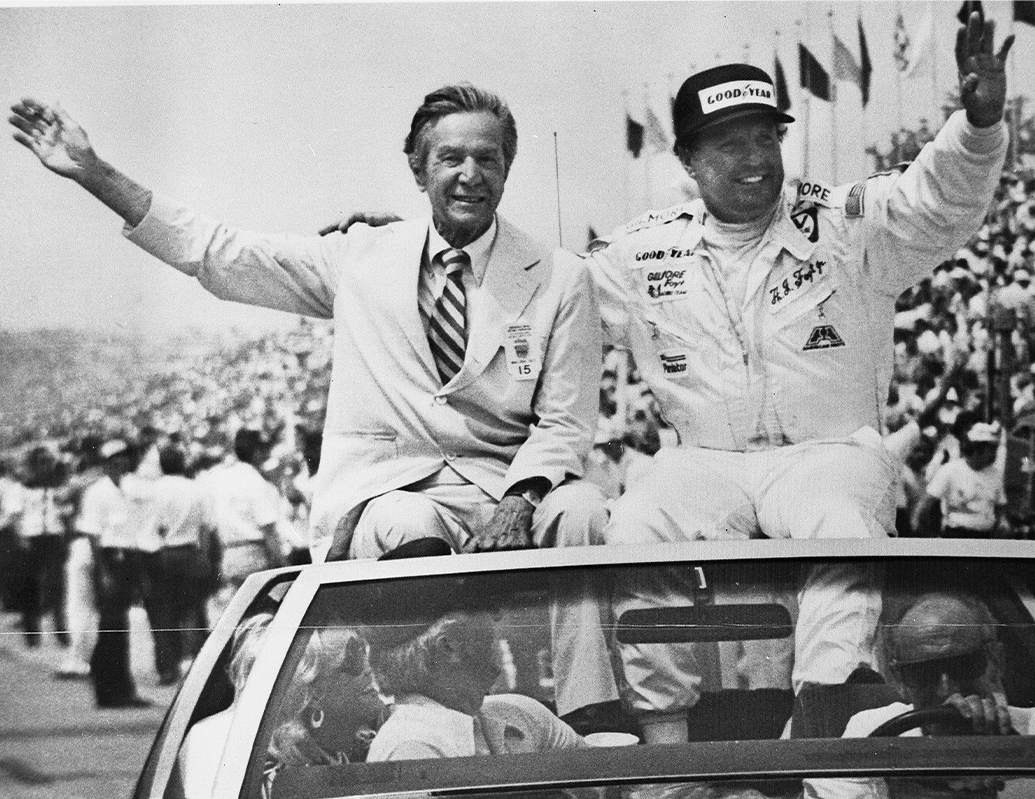
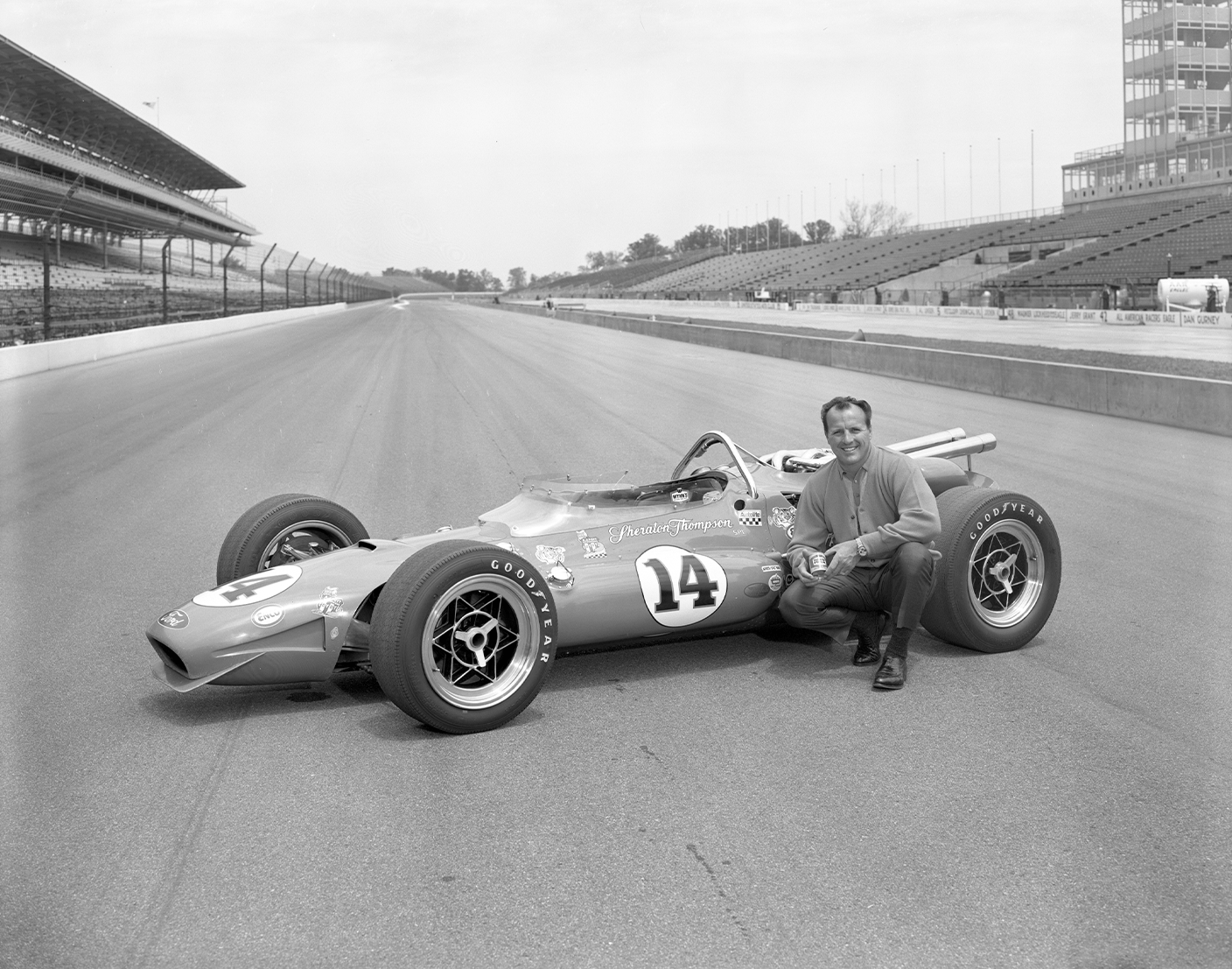










via IndyStar

next story >>
MOMENT: the pioneering path of Janet Guthrie.




